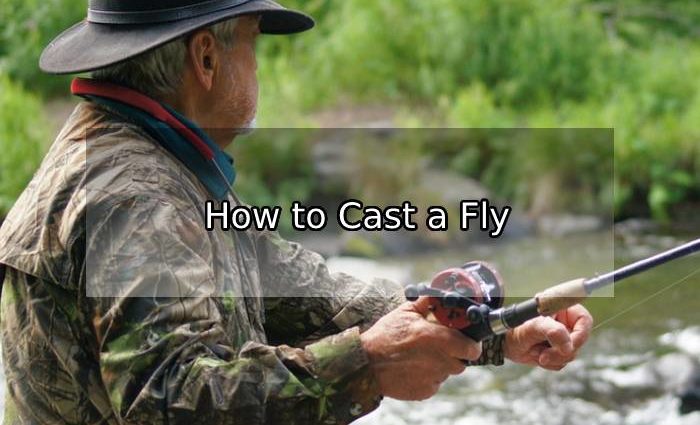Casting the fly is a matter of timing, not strength. Many beginning fishermen use more force than necessary, which results in a sloppy and less accurate cast. Casts should be as short as possible: in most freshwater fishing, you can approach within 50′ of the fish, so long casts are usually unnecessary and ineffective.
The following casts are used by all fly fishermen. To practice them, mount the reel on the rod, pass the line through the guides (but not through the hook-keeper, a small metal loop often placed about 1″ from the cork grip), attach a short leader, and tie a small piece of brightly colored yarn to the end of the leader to simulate a fly. Next, straighten the leader by pulling it through the leader straightener or stretching it hard: stretch 20′ of the line to remove any coils. Go out into your yard, lay 20′ of line on the lawn stretched in front of you, and then begin to practice.
Table of Contents
The Grip
Hold the rod in your dominant hand (called your rod hand; the other is your line hand), as shown below. Keeping your thumb on top of the cork grip allows you to apply pressure during casting. Modern fly casting uses very little movement of the wrist: this grip helps keep your wrist locked.
Overhead Cast
The standard overhead cast allows great precision of delivery. It’s divided into three parts.
- Backcast: The rod should be pointing down toward the water and all slack line pulled in by your line hand. To carry out the backcast, start by lifting the rod upward and backward. Start slowly and accelerate, stopping when the rod is at the position shown in step 3. This will throw the line high into the air behind you. A high backcast is the most important element of good casting.
- Pause: The pause allows the line to straighten in the air behind you. The more line you have in the air, the longer the pause must be. When the line has almost straightened, you can begin the forward cast.
- Forward cast: The forward cast also starts slowly and accelerates. Many fishermen try to put too much power into the cast, but timing is more important. Instead, relax into the cast. Aim for a point about 2′ above the water—this allows the fly to land gently.
Sidearm Cast
The sidearm cast is used when you need to get a cast under some overhanging branches or you don’t have room to do an overhead cast. The mechanics of the sidearm cast are identical to those of the overhead cast: backcast, pause, and forward cast. The only difference is the plane through which the rod passes. A sidearm cast allows you to watch your casting and is good practice for improving all your casting strokes.
Roll Cast
The roll cast keeps most of the line in front of you, which is valuable when fishing in tight quarters. You can’t practice this cast on grass—it needs the water’s resistance to work properly.
False Cast
The false cast is much like the overhead cast, only the line doesn’t actually touch the water. This cast is used to dry a fly off, lengthen the line, or determine accurate placement of the fly. You might make two false casts before making the final delivery cast.



Comments are closed, but trackbacks and pingbacks are open.